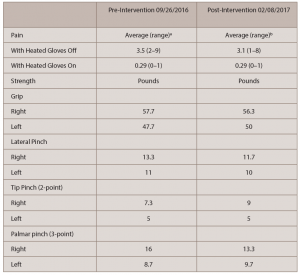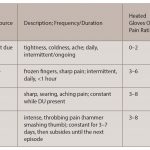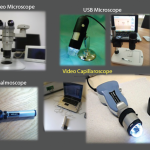Barb was officially diagnosed with dSSc in June 2009. Skin edema and fibrosis rapidly progressed from her wrists and hands to painful full-body involvement by October 2009. Weighing the risk vs. benefit profile of available drugs to treat dSSc, Barb declined a major medication regimen and chose the more conservative treatment of aspirin, as well as conservative management of symptoms.
In 2011, she was evaluated by a rheumatologist who specialized in the diagnosis and treatment of SSc. This specialist provided education and instruction on dSSc and Raynaud’s management, as well as pharmaceutical and non-pharmaceutical treatment options. His recommendation for Raynaud’s management and DU prevention was to initiate amlodipine and avoid exposure to cold, while keeping the hands warm. Because her heart, lungs and kidneys were stable, Barb again chose conservative measures—knit gloves and chemical hand warmers—to address Raynaud’s until signs and symptoms required pharmaceutical intervention. The physician supported her decision and scheduled regular follow-ups.
By January 2012, while other symptoms including full-body skin pain, itching and skin thickness began to subside, the skin on her hands remained tight. In addition, circulatory disturbances continued to be a problem (see Figure 1). In November 2012, Barb developed painful acro-osteolysis in her right thumb and an ulcer on her left 2nd digit. Amlodipine was initiated to assist with conservative management.
In 2012, 2013, 2014, 2015 and 2016 between November and February, Barb developed an ulcer on her left index finger. She applied basic wound-healing techniques and held hand warmers nearly constantly. However, holding the hand warmers hindered her hand function, did not adequately heat her fingertips nor prevent DUs. In 2015, she started wearing heated gloves intermittently, but she could not identify any research to support this or to support wearing heated gloves continuously for hand dysfunction management in dSSc.
Patient-Identified Problems
Impaired bilateral hand function due to:
- Pain secondary to tender fingertips, Raynaud’s, acro-osteolysis, vasculopathy;
- Impaired skin integrity of both hands;
- High risk for DU due to vasculopathy, dSSc disease process and prior history of ulcers;
- Decreased active range of motion (AROM) in all digits due to tissue tightness, shortening of fingers and interstitial edema;
- Decreased strength in both hands; and
- Reduced protective sensation in both hands.
Patient-Identified Goals
- Protect hypersensitive fingers from trauma and injury;
- Decrease digital pain;
- Prevent DUs;
- Prevent Raynaud’s episodes; and
- Increase or maintain hand AROM.
Patient-Centered Intervention

(click for larger image)
Table 1: Pre- & Post-Measures for Pain & Hand Strength
a Calculated from NRS ratings from Dec. 6–Dec. 12, 2015, with intermittent heated-glove use
b Calculated from NRS ratings from Jan. 1–Jan. 31, 2017, with daily, continuous (>6 hours) heated-glove use
Note: NRS=Numerical Rating Scale


